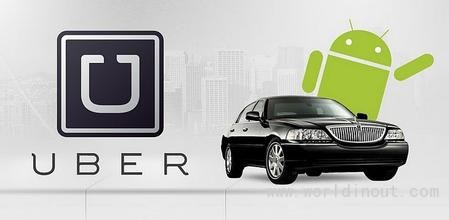
Uber is not genuinely disruptive. At least, so says Clayton Christensen, the Harvard Business School professor who coined the term disruptive innovation in his 1997 book, The Innovator’s Dilemma.
In an article for the Harvard Business Review, Christensen corrects the record on what he defines as true innovative disruption, using Uber as an example of where many commentators go wrong, applying the term too broadly.
In order for a business to be disruptive, it must gain a foothold in a low-end market that had been ignored by the incumbent in favor of more profitable customers, Christensen writes. Otherwise, the disruptor must create an entirely new market, turning non-customers into customers. Uber doesn’t fit into either of those boxes: it targets people who already use taxi services, and it doesn’t provide a particularly lower-end or cheap experience.
In his opinion,“disruption” describes a process whereby a smaller company with fewer resources is able to successfully challenge established incumbent businesses. Specifically, as incumbents focus on improving their products and services for their most demanding (and usually most profitable) customers, they exceed the needs of some segments and ignore the needs of others.
Entrants that prove disruptive begin by successfully targeting those overlooked segments, gaining a foothold by delivering more suitable functionality frequently at a lower price. Incumbents, chasing higher profitability in more demanding segments, tend not to respond vigorously. Entrants then move upmarket, delivering the performance that incumbents’mainstream customers require, while preserving the advantages that drove their early success.When mainstream customers start adopting the entrants’offerings in volume, disruption has occurred.
The second quality of a disruptor where Uber falls short, according to Christensen, is that a truly disruptive business begins with low-quality offerings, then eventually captures the mainstream market by improving quality.
In comparison, the author presents Netflix as a “classically” disruptive model: its initial service wasn’t terribly appealing to Blockbuster’s mainstream customers, who wanted instant gratification when choosing movies. As its quality improved, so did its appeal to Blockbuster’s customers, who eventually peeled off in high enough numbers to force the incumbent business into bankruptcy in 2010.
In some ways, the theory of disruptive innovation hasfallen victim to its own popularity, Christensen writes: “Despite broad dissemination, the theory’s core concepts have been widely misunderstood and its basic tenets frequently misapplied.”
Furthermore, essential refinements in the theory over the past 20 years appear to have been overshadowed by the popularity of the initial formulation. As a result, the theory is sometimes criticized for shortcomings that have already been addressed.
There’s another troubling concern: In Christensen's experience, too many people who speak of “disruption” have not read a serious book or article on the subject. Too frequently, they use the term loosely to invoke the concept of innovation in support of whatever it is they wish to do. Many researchers, writers, and consultants use “disruptive innovation” to describe any situation in which an industry is shaken up and previously successful incumbents stumble. But that’s much too broad a usage.
Christensen stressed, the problem with conflating a disruptive innovation with any breakthrough that changes an industry’s competitive patterns is that different types of innovation require different strategic approaches. To put it another way, the lessons we’ve learned about succeeding as a disruptive innovator (or defending against a disruptive challenger) will not apply to every company in a shifting market. If we get sloppy with our labels or fail to integrate insights from subsequent research and experience into the original theory, then managers may end up using the wrong tools for their context, reducing their chances of success. Over time, the theory’s usefulness will be undermined.






